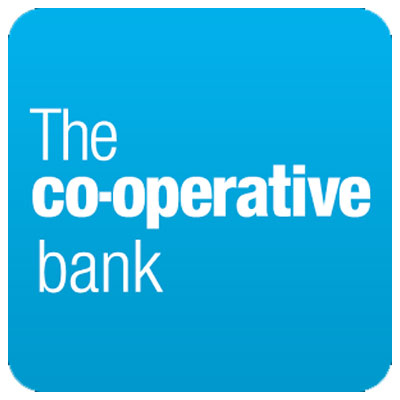In the dynamic landscape of software development, businesses are often faced with the crucial decision of how to approach the creation of their digital products. Two prominent methodologies emerge: white label development and traditional development approaches, each with its own set of advantages and drawbacks. In this article, we delve into a thorough comparative analysis of these approaches, shedding light on their pros, cons, and considerations for businesses evaluating their options.
White Label Development
White label development involves outsourcing the creation of software products or services to a specialised third-party provider. These providers typically offer ready-made solutions or customisable platforms that businesses can brand and sell as their own. Here’s a breakdown of the pros and cons associated with white label development:
Pros:
- Speed to Market: One of the primary advantages of white label development is the accelerated time-to-market. By leveraging pre-built solutions or platforms, businesses can bypass the lengthy development cycles associated with building software from scratch. This allows them to quickly launch their products or services and gain a competitive edge in the market.
- Cost Efficiency: White label development can be cost-effective, especially for businesses operating on tight budgets. By outsourcing development tasks to specialised providers, businesses can avoid the expenses associated with hiring and maintaining an in-house development team. The pricing models of white label services often offer flexibility, allowing businesses to scale their investment according to their needs.
- Access to Expertise: White label development agencies often boast a team of skilled professionals with expertise in various technologies and industries. By partnering with these agencies, businesses can tap into this specialised knowledge and leverage it to create high-quality products that meet their specific requirements.
- Focus on Core Competencies: Outsourcing development tasks frees up valuable time and resources, allowing businesses to focus on their core competencies and strategic objectives. Instead of getting bogged down by technical complexities, businesses can devote their energy to areas where they excel, such as marketing, sales, and customer service.
Cons:
- Limited Customisation: While white label solutions offer a degree of customisation, they may not always align perfectly with the unique needs and preferences of businesses. This limitation can hinder creativity and innovation, leading to products that lack differentiation in the market.
- Dependency on Third-Party Providers: Relying on white label development agencies entails a degree of dependency on external vendors. If the relationship with the provider sours or if the provider experiences disruptions or delays, businesses may face challenges in maintaining the continuity of their operations.
- Brand Dilution: White label solutions often come with the risk of brand dilution. Since these solutions are not developed in-house, businesses may struggle to establish a distinct brand identity and differentiate themselves from competitors who offer similar white label products.
- Lack of Control: Outsourcing development tasks means relinquishing a certain degree of control over the project. Businesses may find it challenging to oversee the development process and ensure that their vision and objectives are fully realised.
Considerations for Businesses:
When evaluating the option of white label development, businesses should consider the following factors:
- Compatibility with Business Goals: Assess whether white label solutions align with the long-term goals and strategic vision of the business. Consider whether the available white label offerings can meet the specific requirements of the target market and support the growth objectives of the business.
- Quality and Reliability of Providers: Conduct thorough research to evaluate the reputation, track record, and reliability of potential white label development agencies. Look for providers with a proven history of delivering high-quality solutions and providing excellent customer support.
- Scalability and Flexibility: Consider whether white label solutions offer the scalability and flexibility needed to adapt to changing market demands and business requirements. Ensure that the chosen provider can accommodate future growth and expansion without compromising on performance or functionality.
- Brand Integration and Differentiation: Explore how white label solutions can be seamlessly integrated into the existing brand identity and marketing strategy of the business. Look for opportunities to customise and differentiate the products to create a unique value proposition in the market.
Traditional Development Approaches:
In contrast to white label development, traditional development approaches involve building software products or services in-house using a dedicated team of developers. Here’s a closer look at the pros and cons of traditional development approaches:
Pros:
- Full Customisation: Traditional development approaches offer maximum flexibility and customisation, allowing businesses to tailor the software to their exact specifications and requirements. This enables businesses to create unique, innovative solutions that stand out in the market and align closely with their brand identity.
- Greater Control: In-house development gives businesses full control over every aspect of the development process, from planning and design to implementation and testing. This level of control allows businesses to closely monitor progress, make real-time adjustments, and ensure that the final product meets their standards of quality and performance.
- Ownership of Intellectual Property: By developing software in-house, businesses retain full ownership of the intellectual property rights associated with the product. This gives businesses greater autonomy and flexibility in terms of licensing, distribution, and monetisation strategies.
- Enhanced Security and Confidentiality: Keeping development activities in-house reduces the risk of data breaches, leaks, or security vulnerabilities associated with sharing sensitive information with third-party providers. This can be particularly important for businesses operating in highly regulated industries or dealing with proprietary information.
Cons:
- Higher Costs: Traditional development approaches typically involve higher upfront costs and ongoing expenses compared to white label solutions. Businesses must invest in hiring and retaining a skilled team of developers, as well as providing the necessary infrastructure, tools, and resources to support development activities.
- Longer Time-to-Market: Building software from scratch requires a significant investment of time and resources, resulting in longer development cycles and delayed time-to-market. This can put businesses at a disadvantage in fast-paced industries where speed and agility are critical for success.
- Resource Constraints: In-house development teams may face resource constraints, such as limited expertise in certain technologies or insufficient bandwidth to handle complex projects. Businesses may need to invest in additional training or recruitment efforts to address these gaps and ensure the success of their development initiatives.
- Risk of Project Failure: Traditional development projects are not immune to risks and challenges, such as scope creep, budget overruns, and technical hurdles. Without proper planning, execution, and risk management strategies in place, businesses may encounter obstacles that derail their projects and undermine their success.
Considerations for Businesses:
When considering traditional development approaches, businesses should take the following factors into account:
- Resource Allocation and Budgeting: Evaluate the financial implications of in-house development, including hiring costs, infrastructure expenses, and ongoing maintenance and support expenditures. Ensure that the allocated budget aligns with the scope and complexity of the project and allows for unforeseen contingencies.
- Technical Expertise and Skill Sets: Assess the skill sets and expertise available within the internal development team and identify any gaps or areas for improvement. Consider whether additional training, recruitment, or collaboration with external partners is needed to address these challenges and ensure the success of the project.
- Risk Management and Contingency Planning: Develop a comprehensive risk management plan that identifies potential threats, vulnerabilities, and mitigation strategies associated with the development project. Anticipate potential obstacles and setbacks, and have contingency plans in place to minimize their impact on the project timeline and budget.
- Alignment with Business Objectives: Ensure that the chosen development approach aligns closely with the overarching goals and objectives of the business. Consider how the development project contributes to strategic initiatives, enhances competitive advantages, and supports long-term growth and profitability.
- Collaboration and Communication: Foster open communication and collaboration between cross-functional teams involved in the development process, including developers, designers, project managers, and stakeholders. Establish clear channels for feedback, iteration, and decision-making to streamline the development workflow and ensure that everyone is aligned with project goals and priorities.
- Scalability and Future-proofing: Anticipate future scalability and evolution of the software product beyond the initial development phase. Design the architecture and infrastructure with scalability in mind. This allows for seamless expansion, integration of new features, and adaptation to changing market dynamics and user demands.
- Compliance and Regulatory Considerations: Take into account any regulatory requirements, industry standards, or compliance frameworks. Because this may impact the development process and deployment of the software product. Ensure that the development approach adheres to relevant regulations and guidelines, mitigating legal and repetitional risks associated with non-compliance.
Conclusion
In conclusion, the decision between white label development and traditional development approaches is not a one-size-fits-all proposition. Each approach has its own set of advantages, drawbacks, and considerations that businesses must carefully. Based on their unique circumstances, goals and resources.
White label development offers speed, cost-efficiency, and access to specialised expertise, making it an attractive option for businesses looking to quickly launch products or services with minimal upfront investment. However it may come with limitations in customisation, brand differentiation and dependency on third-party providers.
On the other hand, traditional development approaches provide maximum flexibility, control, and customisation, allowing businesses to create bespoke solutions that align closely with their brand identity and strategic objectives. However, they require greater investment in terms of time, resources, and expertise, and may entail higher risks and longer time-to-market.
Ultimately, the key to success lies in aligning the chosen development approach with the specific needs, goals, and constraints of the business. While also considering factors such as budget, timeline, scalability, and regulatory compliance. By carefully evaluating these factors and making informed decisions. Businesses can embark on development initiatives that drive innovation, growth, and competitive advantage in the digital landscape.
Work with unit36
Discover the power of seamless innovation with our white label development services. At unit36 we specialise in crafting customisable, market-ready solutions that empower businesses to accelerate their digital initiatives with confidence. From cutting-edge software applications to custom ecommerce development projects in Woocommerce and Shopify, our expert team is dedicated to delivering high-quality, on-time solutions that meet the unique needs of our clients. With a focus on speed, cost-efficiency, and unparalleled expertise, we enable businesses to quickly launch, scale, and differentiate their offerings in today’s competitive market landscape. Partner with us to unlock new opportunities for growth and success in the digital era.
Request a callback












